Register to unlock your exclusive B2B prices and start shopping. Sign up now!
Pilz Control devices for switches and sockets
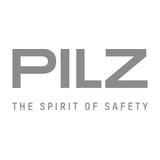
Order only
Pilz
PMI v704e
799,48 €
EAN: 4046548083330
MPN: 266704
Package: 1

Order only
Pilz
PMI v707e
1 625,66 €
EAN: 4046548083347
MPN: 266707
Package: 1

Order only
Pilz
PMI v815
4 390,49 €
EAN: 4046548096859
MPN: 266815
Package: 1

Order only
Pilz
Protective Cover PMI 15.0"/38cm
202,53 €
EAN: 4046548003949
MPN: 375316
Package: 1
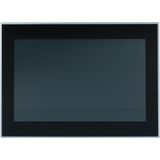
Order only
Pilz
PMI v812
3 915,85 €
EAN: 4046548096842
MPN: 266812
Package: 1
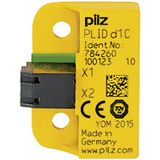
Order only
Pilz
PLID d1 C
339,27 €
EAN: 4046548067118
MPN: 784260
Package: 1
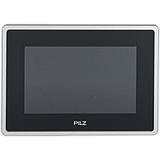
Order only
Pilz
PMI 607 Control
4 524,54 €
EAN: 4046548083316
MPN: 265607
Package: 1

Order only
Pilz
Protective Cover PMI 12.1"/31cm
165,59 €
EAN: 4046548003956
MPN: 375314
Package: 1
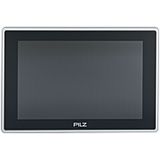
Order only
Pilz
PMI 612 Control
5 781,32 €
EAN: 4046548083323
MPN: 265612
Package: 1
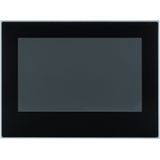
Order only
Pilz
PMI v807
2 847,88 €
EAN: 4046548096835
MPN: 266807
Package: 1

Order only
Pilz
Protective Cover PMI 6,5"/16 cm
111,51 €
EAN: 4046548003970
MPN: 375311
Package: 1
Why Pilz Control Devices Matter
In modern machine and plant systems, the operator interface and signalling elements aren’t simple accessories—they form the human-machine gateway: buttons pressed, switches selected, status lights interpreted. Choosing robust interface hardware is crucial for reliability, clear communication and safe operation. Pilz’s control devices deliver consistent, high-quality performance designed specifically for industrial use.
Core Technology & Design Principles of Pilz Control Devices
- Operator Panels & HMI: Pilz offers operator terminals (e.g., the PMI series) designed for visualisation, operator input and monitoring tasks.
- Control & Signal Devices: This category includes E-STOP buttons, selector switches, push-buttons, pilot lights and signalling modules from Pilz, designed with safety and durability in mind.
- Industrial-grade construction: Each device carries build qualities suitable for machine fields—rugged housing, high cycle-life, integration compatibility with Pilz automation systems.
Variants & Typical Applications of Pilz Control Devices
- Pilot Lights & Stack Indicators: Visual status indicators on machine frames give operators immediate information—“run”, “fault”, “maintenance”.
- Push-Buttons, Selector Switches & Control Stations: For machine start/stop, manual modes, access control—Pilz modules provide consistent feel and performance.
- Emergency-Stop Buttons & Safety Interfaces: Critical for safe operator intervention, Pilz E-STOP and guard-interlock modules integrate seamlessly with safety logic.
- Integrated Operator Panels & Terminals: In control rooms or machine cells where visualisation and multi-input are needed, Pilz operator panels provide a high-quality human interface.
Procurement & Design Checklist for Pilz Control Devices
- Function and environment: Define whether the device will be used for general control (selector, push-button), signalling (pilot light) or safety-critical function (E-STOP).
- Mounting & footprint: Check panel cut-outs, device depth and compatibility with your machine’s interface module layout.
- Electrical & interface spec: Confirm voltage, current, pilot-light colour scheme, switch travel, connector types or wiring method.
- Standards & integration: Ensure devices comply with relevant machine-safety standards and integrate with your chosen controller or safety logic (Pilz or otherwise).
- Maintenance & spares: Standardise interface devices across your machine fleet for easier spares stock and faster maintenance.
Operational Reliability & Maintenance Benefits
- Pilz control devices reduce mis-inputs: consistent ergonomics, clear labelling and reliable mechanics minimise operator error.
- Modlar, easy-replace design means you can swap in a defective device (e.g., a push-button or selector) with minimal panel downtime.
- Using the same brand across interface, logic and safety means fewer suppliers, simpler documentation and streamlined servicing.
Integration with Your Automation Ecosystem
Choosing Pilz control devices means your operator interface aligns with the same brand ecosystem as your sensors, controllers and safety modules. Benefits include:
- Unified documentation and labelling conventions across machine cells.
- Simplified spare-parts strategy and supplier relationships.
- Better traceability and consistency across builds and commissions.
Why Choose Bank of Lamps (Distributor)
- We supply genuine Pilz interface devices (control switches, operator panels, signalling modules) with full manufacturer traceability.
- Our EU-based warehouse in Latvia ensures efficient delivery across Europe, supporting panel-builders and integrators.
- We operate on a wholesale B2B model—ideal for larger machine builders and system integrators ordering Pilz components at scale.
- Real-time stock visibility on bankoflamps.com helps you lock BOMs confidently and align procurement with project schedules.